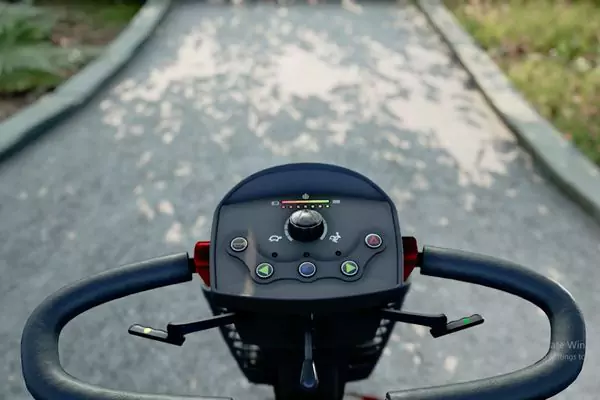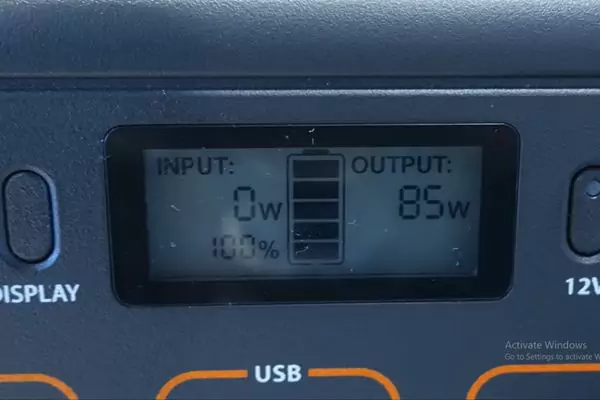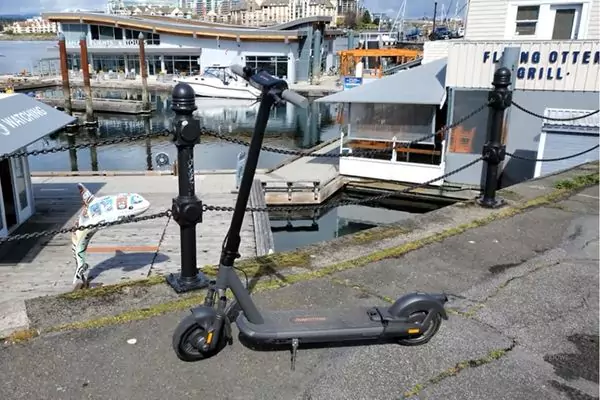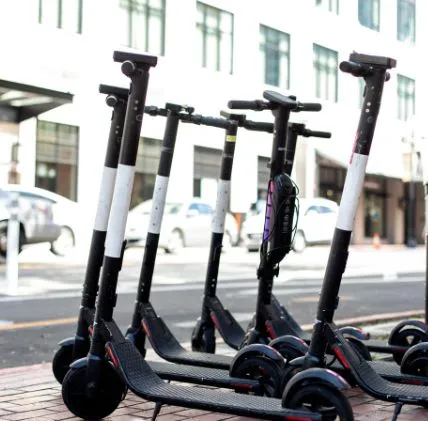An average electric scooter uses between 1 to 3 kilowatt-hours (kWh) of electricity per 100 kilometers. Charging an electric scooter’s battery typically consumes around 0.3 to 0.6 kWh for a full charge.
Electric scooters have surged in popularity due to their economic and environmental benefits. These compact vehicles offer an efficient mode of transport for short distances, requiring only a fraction of the energy used by traditional vehicles. With a focus on sustainability and cost-effectiveness, electric scooters are an exemplary choice for eco-conscious commuters.
The electricity consumption of an electric scooter depends on the model, battery capacity, and riding habits. Daily commuters often find electric scooters a convenient and affordable alternative, as they can significantly cut down on fuel costs and reduce carbon footprints. As cities become increasingly congested, electric scooters provide a smart solution for navigating through traffic while promoting greener transportation options.
Contents
- 1 How Much Electricity Does An Electric Scooter Use?
- 2 Electric Scooter Battery Basics
- 3 Evaluating Energy Efficiency
- 4 Optimal Charging Techniques
- 5 Maximizing Scooter Battery Lifespan
- 6 Breaking Down The Cost Of Electricity
- 7 Savings And Environmental Impact
- 8 Frequently Asked Questions
- 9 Final Thoughts
- 10 Informational Video
How Much Electricity Does An Electric Scooter Use?

How much electricity does an electric scooter use? This question may buzz in the minds of eco-conscious riders and penny-wise users alike. Electric scooters have become a trendy mode of transportation in our increasingly urbanized world – they’re not only nifty and convenient, but they also promise a green alternative to fossil-fuel-powered vehicles. Understanding their energy consumption can help you gauge operational costs and their environmental impact. Let’s plug into the details and shed light on the electrical appetite of these modern-day chariots.
Calculating Energy Use On A Per-charge Basis
Determining the energy consumption of your electric scooter requires a basic understanding of electricity metrics and your scooter’s specifications. The battery capacity, usually shown in watt-hours (Wh), is a pivotal figure. For instance, a scooter with a 300Wh battery fully depleted requires 300 watt-hours of electricity to charge completely.
- Find your scooter’s battery capacity – typically listed in the user manual or on the battery itself.
- Check your electricity bill for the cost per kilowatt-hour (kWh). Note that 1 kWh = 1000 Wh.
- Multiply the capacity of the scooter’s battery by the cost per kWh to calculate the cost of a full charge.
For instance, if your local electricity rate is $0.13 per kWh, charging a 300Wh battery would cost:
300Wh / 1000 = 0.3 kWh
0.3 kWh $0.13/kWh = $0.039
A mere four cents to fully charge your electric scooter – quite the economical ride!
Comparing Electricity Use To Other Electric Devices
Putting the electric scooter’s energy use in perspective can be insightful. Let’s compare it with other common household devices.
| Device | Average Power Consumption (kWh) |
|---|---|
| Electric Scooter (300Wh battery) | 0.3 kWh (per charge) |
| Laptop (50W power adaptor, used for 5 hours) | 0.25 kWh |
| LED Lightbulb (10W, used for 5 hours) | 0.05 kWh |
| Window AC unit (1,000W, used for 3 hours) | 3 kWh |
Seeing the numbers laid out, an electric scooter’s charge-to-charge energy use is impressively low, especially when compared to a window AC unit – arguably the Goliath to our scooter’s David. The electric scooter not only uses less electricity than many other devices but exemplifies the principle of energy-efficient transportation.
Understanding Electricity Measurement

Electricity measurement is fundamental to understanding the efficiency and cost-effectiveness of any electric device, including electric scooters. To fully grasp the energy consumption of your electric scooter, it’s vital to familiarize yourself with the basic units of electricity and how they apply to your two-wheeled ride. This section will demystify terms like kilowatt-hours and shed light on how electrical usage is precisely measured in electric scooters.
Kilowatt-hours (kWh) Explained
Kilowatt-hours, commonly abbreviated as kWh, serve as the primary unit of energy used by power companies to determine your energy consumption. One kWh represents the amount of energy expended by running a device that consumes 1,000 watts for one hour. So, the more wattage a device uses, or the longer it operates, the higher the kWh consumption—and subsequently, the electric bill.
To put this into perspective:
- A 100-watt lightbulb running for 10 hours uses 1 kWh of energy.
- An electric scooter with a 500-watt motor running for 2 hours also uses 1 kWh.
How Electricity Usage Is Measured In Electric Scooters?
Electric scooters are much like any household electric appliance in terms of how their electricity usage is measured. The process involves two key metrics: the capacity of the battery and the motor’s power rating. In electric scooters, this is typically represented in watt-hours (Wh) as scooters rarely consume energy by the kilowatt-hour. The calculation is straightforward:
Battery capacity (in Wh) / Motor power (in Watts) = Running hours until the battery is depletedFor instance, if an electric scooter has a 240 Wh battery and is equipped with a 120W motor, the scooter should theoretically run for 2 hours before the battery drains (240 Wh / 120 W = 2 hours).
However, to convert this to kWh (which is how your home electricity usage is billed), one would divide the watt-hours by 1,000. Following the above example:
240 Wh / 1,000 = 0.24 kWh
Electric Scooter Battery Basics
- Lead-Acid Batteries: Often found in entry-level models, these are heavier and offer a lower energy density, but they’re economical.
- Nickel-Metal Hydride (NiMH) Batteries: NiMH batteries have a higher capacity than lead-acid and are lighter, yet they are less common due to cost.
- Lithium-ion Batteries: The gold standard for electric scooters, offering the best energy-to-weight ratio, long life spans, and consistent performance.
Battery capacity, measured in ampere-hours (Ah), is a vital metric indicating how much charge a battery can hold. It directly correlates with the scooter’s range. The average capacities seen in electric scooters typically fall within these ranges:
| Battery Type | Average Capacity (Ah) |
|---|---|
| Lead-Acid | 5-12 Ah |
| NiMH | 8-15 Ah |
| Lithium-ion | 10-30+ Ah |
The larger the capacity, the greater the travel distance on a single charge. Keep in mind, factors like scooter wattage, rider weight, and terrain type affect the actual range of the scooter.
Evaluating Energy Efficiency
Understanding the energy efficiency of electric scooters is essential for consumers mindful of their electricity consumption and environmental impact. Electric scooters are celebrated for their convenience and eco-friendly advantages, but how much electricity do they really use? This exploration is not only about quantifying energy use, but also about appreciating the advanced design and technological integration that make these two-wheeled wonders a model of efficiency.
Factors Affecting Electric Scooter Energy Consumption
Beyond the basic measure of kilowatt-hours (kWh), several factors influence an electric scooter’s energy consumption:
- Motor power: Scooters with higher wattage motors may consume more electricity to deliver enhanced performance.
- Battery capacity: The larger the battery, the more energy it can store, but also potentially the more it uses during a charge cycle.
- Weight of the rider: Heavier loads require more energy to move, thus increasing consumption.
- Terrain: Riding on hills or rough surfaces can lead to increased energy usage compared to flat terrain.
- Riding habits: Frequent stops, high speeds, and aggressive acceleration can all raise the energy demands of a scooter.
The interplay between these factors can result in a wide range of energy usage even among scooters of similar models and brands.
Methods For Measuring Scooter’s Electricity Usage
To accurately assess how much electricity an electric scooter uses, one must adopt reliable methods of measurement:
- Use a dedicated electricity usage monitor by connecting it between the scooter’s charger and the wall outlet. This device will display the kWh consumed during each charging session.
- Refer to the scooter’s specifications for its battery capacity (usually in watt-hours or Wh) and divide this by the voltage of the power supply to get the Amp-hours (Ah). Multiply by the average time to charge for total energy use.
- Consult manufacturer’s data for estimated energy consumption per mile or kilometer, which can provide a rough idea of usage based on travel distances.
When measured over time, these methods provide insight into not only the electricity consumption but also the cost-effectiveness and environmental footprint of using an electric scooter.
Optimal Charging Techniques
When diving into the realm of electric scooters, understanding the nuances of Optimal Charging Techniques is pivotal for both the longevity of your scooter and the efficiency of your energy use. Delving into the art of charging isn’t just about plugging in your scooter; it’s about ensuring that you’re getting the most out of your rides without unnecessary power consumption. Revel in the insights on the best ways to juice up your electric scooter for optimal performance and sustainable power usage.
Best Practices For Charging Electric Scooters
- Use the Original Charger: Always stick to the charger provided by the manufacturer to avoid damaging the battery.
- Avoid Overcharging: Overcharging can reduce battery life. Unplug the scooter once it reaches full charge.
- Maintain Charge Levels: Keeping the battery between 20% and 80% can help preserve its lifespan.
- Charge at Room Temperature: Extreme temperatures can affect the charging process and battery health. Opt for moderate climate conditions.
- Regular Charging: Even if not using the scooter, charge the battery regularly to prevent it from depleting completely.
How Charging Affects The Scooter’s Power Usage?

Charging your electric scooter isn’t just a task; it’s a science that influences the overall power consumption of your vehicle. The charging routine directly impacts battery efficiency and thereby the scooter’s power usage. Understanding the correlation between charging habits and power draw is crucial.
- Charge Cycles: A battery’s lifespan is calculated in charge cycles. Charging correctly extends these cycles and maximizes power retention.
- Energy Consumption: Overcharging or undercharging can lead to increased energy draw during operation, as the scooter compensates for the imbalanced energy levels.
- Battery Degradation: Inconsistent charging methods may cause the battery to degrade faster, resulting in a more frequent need for power.
- Optimal Power Output: A well-maintained battery through appropriate charging practices ensures the scooter delivers consistent power during use.
By adhering to these insights, not only can you prolong the life of your electric scooter’s battery but also contribute to a more energy-efficient and cost-effective ride. Embrace these effective charging techniques to glide through your daily commute with ease and sustainability.
Maximizing Scooter Battery Lifespan
If you’re an electric scooter enthusiast, ensuring that your ride operates at peak efficiency is key. Maximizing scooter battery lifespan is not only about safeguarding the power unit of your eco-friendly vehicle but also about optimizing your electricity consumption over time. Delving into best practices for battery maintenance can lead to prolonged periods between charges, a longer overall battery life, and savings on electricity bills. In the following sections, we will explore various strategies to help extend your scooter’s battery life and discuss how proper battery care relates directly to lower electricity use.
Tips For Extending Battery Life
Attaining maximum battery life on your electric scooter means adopting a few smart habits and making regular maintenance a routine. Here are some pivotal tips:
- Avoid complete discharge: Regularly discharging your scooter’s battery fully can hasten its demise. Try to plug your scooter in for a charge when it reaches around 20-30% battery life.
- Keep it cool: Heat is the nemesis of lithium batteries. Store and charge your scooter in a cool, dry place away from direct sunlight.
- Use the right charger: It’s vital to use the charger that comes with your scooter or one that’s approved by the manufacturer to prevent damage.
- Moderate your speed: Pushing your scooter to its speed limits can drain the battery faster. A moderate pace ensures more stable energy consumption.
- Regular check-ups: Keeping an eye on your scooter’s health with inspections can help nip issues in the bud that might affect battery efficiency.
The Relation Between Battery Care And Electricity Usage
A well-maintained electric scooter battery isn’t just about longevity; it’s intricately linked to the amount of electricity your vehicle consumes. Batteries in good condition retain their charge more effectively and require less frequent charging sessions. Here’s the correlation:
| Aspect of Battery Care | Impact on Electricity Usage |
|---|---|
| Optimal Charging Habits | Reduces energy waste during overcharging and extends the period between charges. |
| Temperature Control | Prevents battery degradation caused by extreme temperatures, equating to efficient energy use. |
| Using the Right Accessories | Ensures that the scooter is being charged with the correct voltage, curbing unnecessary power consumption. |
| Speed Regulation | Minimizes rapid energy depletion, lowering the frequency of charging. |
| Timely Maintenance | Keeps the battery at optimal performance, reducing the likelihood of inefficient electricity use. |
When you maintain your electric scooter’s battery, you not only extend its service life but also enhance the energy efficiency of each ride. In the long term, this responsible maintenance results in a noticeable reduction in electricity costs, as your scooter will demand less power to stay on the move.
Breaking Down The Cost Of Electricity
Remember to include relevant keywords throughout the content to optimize for SEO, such as “electric scooter electricity usage” and “cost to charge electric scooter”
Understanding Your Electricity Bill
To accurately calculate the electricity usage of an electric scooter, first grasp the basics of your electricity bill. This bill is measured in kilowatt-hours (kWh), which is the unit of energy used by power companies to determine your energy consumption. Here’s how you can make sense of the charges:
- Identify the price per kWh, which varies by location and provider.
- Check your monthly usage to see average consumption patterns.
- Note any tiered pricing structures or time-of-use rates that might affect cost during peak hours.
Estimating the cost to charge an electric scooter
Estimating The Cost To Charge An Electric Scooter
Now, let’s estimate the cost to charge your electric scooter. Generally, an electric scooter battery has a capacity of around 0.5 to 2 kWh. To calculate the charging cost:
- Determine your electric scooter’s battery capacity (in kWh).
- Find out your electricity provider’s rate (price per kWh).
- Multiply the battery capacity by the rate per kWh to get the cost per charge.
For instance, charging a 1 kWh electric scooter battery at a rate of $0.13 per kWh would look like this:
1 kWh battery x $0.13 per kWh = $0.13 per charge
Regular usage can influence the monthly costs, so consider your own charging frequency. If you charge your scooter 5 times a week, the calculation would be:
$0.13 per charge x 5 charges per week x 4 weeks = $2.60 per month
This simple breakdown can make it clear that electric scooters are an economical option for daily commuting when compared to other forms of transportation.
A table can be useful here to represent different scenarios – let’s provide an example Additional rows can be added to cover different scenarios, with varying battery capacities or electricity rates
| Battery Capacity (kWh) | Price per kWh | Cost per Charge | Charges per Week | Monthly Cost |
|---|---|---|---|---|
| 1 | $0.13 | $0.13 | 5 | $2.60 |
Savings And Environmental Impact
Electric scooters are becoming a popular mode of urban transportation, and their cost-effectiveness, coupled with environmental advantages, is playing a significant role in this surge. Understanding how much electricity an electric scooter uses not only helps in estimating the potential savings but also illustrates the positive impact these nifty devices have on reducing urban carbon footprints. Exploring both economic and eco-friendly merits is essential in assessing electric scooters as a sustainable travel alternative.
Cost Comparison With Other Modes Of Transportation
When evaluating the savings associated with electric scooters, it’s crucial to compare their operating costs against other common transportation choices. Electric scooters are highly efficient, using minimal electricity, which reflects in the lowering of both direct and indirect travel expenses.
- Public Transport: Monthly passes add up and may cost more than charging an electric scooter.
- Personal Vehicles: Include fuel, maintenance, insurance, and parking, all of which are significantly higher.
- Ridesharing Services: Can be costly, especially during peak hours.
| Mode of Transportation | Average Monthly Cost | Electric Scooter Monthly Cost | Monthly Savings |
|---|---|---|---|
| Public Transport | $70 | $5 | $65 |
| Personal Vehicle | $250 | $5 | $245 |
| Ridesharing | $150 | $5 | $145 |
Electric scooters emerge as clear winners in the cost-effective race with significant monthly savings.
The Environmental Benefits Of Using Electric Scooters
The reduced carbon footprint when switching to electric scooters is noteworthy. They consume significantly less energy compared to cars and even public transportation when calculated per passenger mile. Electric scooters run on electricity that can be sourced from renewable energy, further minimizing environmental impact.
- Lower greenhouse gas emissions.
- Reduction in urban noise pollution.
- Decreased dependence on fossil fuels.
- Less traffic congestion, resulting in reduced idling and air pollution.
Through the use of electric scooters, cities can hope to witness improved air quality and a healthier environment for their residents. Adapting to electric scooters is a step towards a greener, more sustainable future.
Frequently Asked Questions
What Is Electric Scooter’s Electricity Consumption?
Electric scooters are quite efficient, typically consuming around 500Wh to 1 kWh for a full charge, depending on the model and battery capacity. This equates to a very low cost per charge, often less than a dollar.
How Often Should You Charge An E-scooter?
Ideally, charge your electric scooter after each use to maintain battery health. However, if the battery isn’t fully depleted, charging every few days is acceptable, especially for models with lithium-ion batteries that have no memory effect.
Does Battery Size Affect Electric Usage?
Yes, the size of the scooter’s battery will directly impact electricity usage. Larger batteries require more electricity to charge fully, whereas smaller batteries will consume less energy, aligning with their capacity.
Can Riding Style Influence Power Consumption?
Absolutely, aggressive riding with rapid acceleration and frequent stop-starts can increase an electric scooter’s power consumption. Smooth, steady riding at a consistent speed is more energy-efficient and conserves battery life.
Final Thoughts
Understanding an electric scooter’s energy consumption is beneficial for budgeting and environmental awareness. These nimble vehicles are typically energy-efficient, offering a cost-effective alternative to traditional transportation. Choosing an electric scooter can lead to significant electricity savings, reflecting a smart choice for eco-conscious commuters eager to reduce their carbon footprint.


